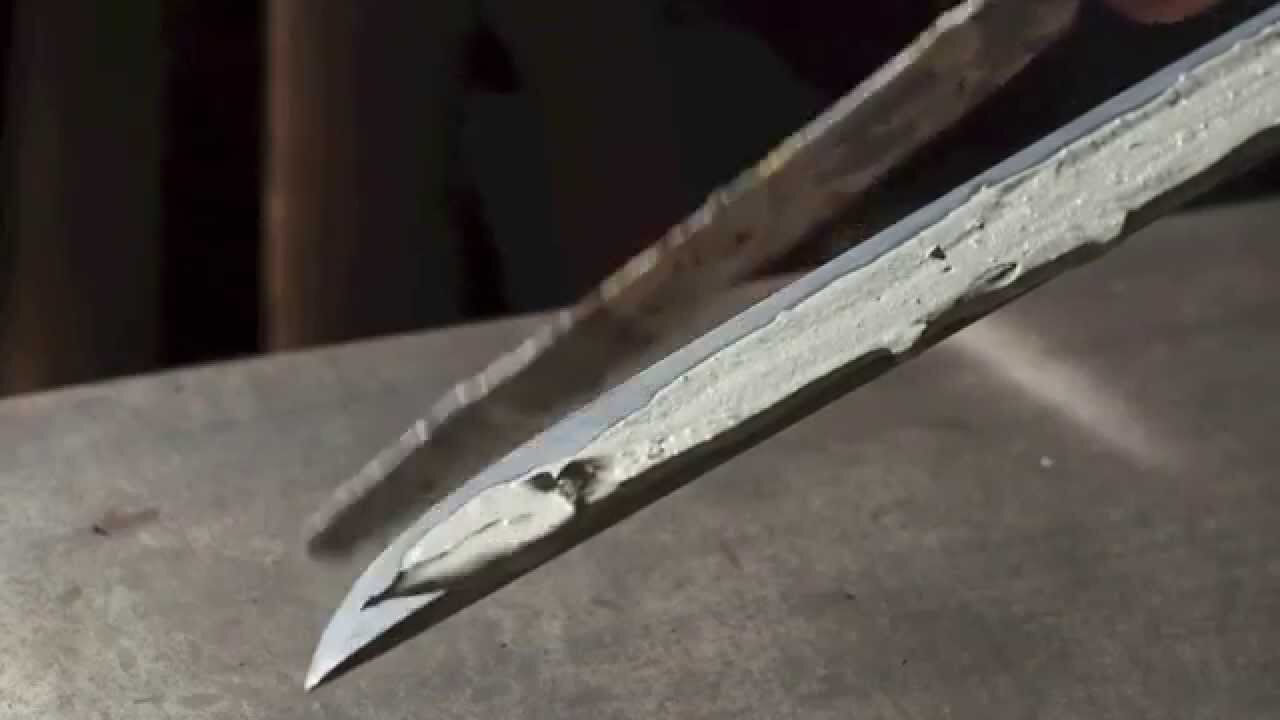Premium Only Content

SOTW #6 - Yaki-Ire - A Tanto Blade is Born
http://islandblacksmith.ca/process/
Process of Clay Tempering a Tanto Blade
Once the steel is shaped as much as possible in its softer state, it is coated with a thin layer of clay along the edge and a thicker layer on the body and spine. During the hardening process, the split second difference in cooling time caused by the clay layer creates two different hardness areas in the same piece of steel. The edge cools faster and forms a very hard steel structure called martensite while the body cools slower and forms a very tough steel structure made of ferrite and pearlite. The boundary between these two areas is called hamon and is commonly seen as a frosted wavy line down the length of a polished sword blade.
When the clay is fully dry, a charcoal fire is used to heat the steel slowly and evenly, taking care not to overheat any part of it and working in the dark for accurate colour viewing. First the spine is heated to bring the whole blade to just below temperature, and then it is flipped over to focus heat on the edge. When the entire edge is at the correct temperature, it is plunged into a hot water bath, edge down, and held until cool (yaki-ire). The hardness is checked with a file and the process repeated if necessary. After hardening, the clay is removed and the steel is heated slightly again to remove some of the internal stresses (yaki-modoshi). Once this process is finished, and if the steel survives, the blade is ready for Togi, hand polishing.
more: http://islandblacksmith.ca/process/yaki-ire-clay-tempering/
-
 2:37:49
2:37:49
The Connect: With Johnny Mitchell
1 day ago $6.88 earnedBlackwater Mercenary EXPOSES Private Military War Secrets From The Middle East, Fueling Terrorism
31.4K29 -
 2:54:21
2:54:21
Total Horse Channel
2 days ago2025 Scottsdale Arabian Horse Show | Saturday Evening Session
67K6 -
 22:39
22:39
The Mel K Show
8 hours agoMel K & Representative Brandon Gill | Our Constitutional Republic is Being Restored | 4-26-25
52.2K45 -
 4:17:17
4:17:17
VapinGamers
8 hours ago $4.22 earned📣 Fortnite Family Night! - Games and Dubs with BrianZGame - !rumbot
39.5K3 -
 4:27:48
4:27:48
ThePope_Live
6 hours agoLIVE - First time playing The Finals in over a YEAR! Still good? with @Arrowthorn
30.7K1 -
 3:06:26
3:06:26
TruthStream with Joe and Scott
12 hours agoRoundtable with Patriot Underground and News Treason Live 4/26 5pm pacific 8pm Eastern
50.9K34 -
 8:52
8:52
Tundra Tactical
10 hours ago $9.72 earnedSCOTUS Denies Appeal, Minnesota Courts Deal 2a Win!
51.7K11 -
 10:36:01
10:36:01
a12cat34dog
12 hours agoONE WITH THE DARK & SHADOWS :: The Elder Scrolls IV: Oblivion Remastered :: FIRST-TIME PLAYING {18+}
71.3K5 -
 22:27
22:27
Exploring With Nug
19 hours ago $12.83 earnedSwamp Yields a Chilling Discovery in 40-Year Search for Missing Man!
64.5K17 -
 1:23:26
1:23:26
RiftTV/Slightly Offensive
13 hours ago $12.20 earnedThe LUCRATIVE Side of Programming and the SECRETS of the "Tech Right" | Guest: Hunter Isaacson
70.7K36